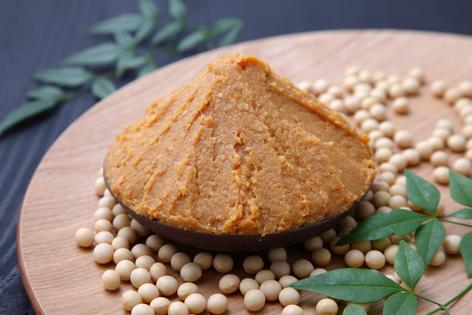Environmental Nutrition: Falling for Japanese fermented foods
The origin of fermenting foods in Japan can be traced to China, circa 300 B.C., with the making of koji, a mash of grains fermented with Aspergillus oryzae, which is used to ferment other foods. The early Chinese recipe was brought to Japan by a Zen priest, who added soy. The practice was further refined by the wife of a Japanese warrior, who opened the first commercial shoyu (soy sauce) brewery. Shoyu is brewed from equal parts of soy and wheat, and lends a savory, "meaty" flavor to foods.
Land of fermented foods
There are many fermented foods in Japanese cuisine, including sauces, pastes, fish flakes, fruits and vegetables. Along with shoyu, miso -- a sweet, flavorful paste made from fermented soy beans with grains or other legumes -- is one of the most commonly known Japanese fermented foods; it's used in soups, dressings, as a seasoning base for meats and seafood, and more.
Other popular fermented products include sweet mirin and dry sake rice wines and yonezu rice vinegar. Natto is a fermented soybean dish, fermented with Bacillus subtilis bacteria versus the mold that produces miso and shoyu.
Including fermented foods in the diet can offer potential health benefits. The process of fermentation can increase the nutrition value of legumes like soy by improving bioavailability. In addition, fermented foods can offer probiotics -- beneficial live bacteria. Look for unpasteurized products, clearly labeled on the packaging, to ensure live bacteria to deliver probiotic benefits.
Diving into Japanese flavor
Miso and soy sauce are readily available in a typical supermarket. Other fermented foods, such as natto and yonezu are available in Asian grocery stores. Be aware that some fermented foods, such as miso and shoyu are very salty, contributing to the high sodium content of the Japanese diet. However, lower sodium versions are available for soy sauce, and only a small amount of fermented foods can deliver a burst of flavor. Use these traditional fermented foods in Asian rice and noodle dishes, stir-fries, curries, marinades, dressings and vegetable dishes.
(Environmental Nutrition is the award-winning independent newsletter written by nutrition experts dedicated to providing readers up-to-date, accurate information about health and nutrition in clear, concise English. For more information, visit www.environmentalnutrition.com.)







